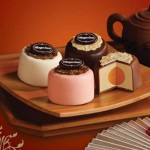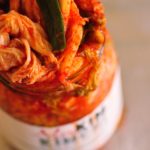“Back to Human”
Hu chocolate was founded in 2012 by Jason H. Karp and his wife, Jordan Brown, to create a chocolate brand that is both delicious and healthy. The brand uses only high-quality ingredients such as organic cacao, coconut sugar, and cocoa butter. Hu chocolate is vegan, paleo-friendly, and gluten, dairy, and soy-free. These qualities are emphasized in the brand’s marketing, which positions Hu chocolate as a healthier and more ethical alternative to mass-produced chocolates. The long list of “no [insert “unnatural” ingredient]” displayed next to the quote “Proudly made with grass-fed milk” reflects the ideas promoted by Bové, a French activist “against the practices of the industrial food multinationals” (p. 598) that are at the origin of “malbouffe”. This French word can be translated to “junk food.” It is terrible food because it is industrially produced.
Hu chocolate is manufactured from organic cacao beans purchased from Dominican Republic, Peru, and Ecuadorian farmers. The company emphasizes the quality of its materials and production process, employing a stone-grinding technique designed to preserve the flavor and nutrients of the cacao beans.
However, despite its claims of being artisanal and traditional, Hu chocolate is still a part of the global industrial production process. The brand relies heavily on standardized technoscientific testing to ensure product consistency and quality. This is evident in the brand’s website, which states that “our chocolates undergo rigorous lab testing for quality and purity, including frequent microbiological and heavy metal testing.” While these measures are necessary for ensuring the product’s safety and quality, they also standardize and industrialize the production process.
Furthermore, while Hu chocolate may use traditional methods in its chocolate-making process, it is still very much a modern and industrialized process. The brand uses state-of-the-art equipment, such as conching and tempering machines, to produce chocolate. These machines allow for greater efficiency and consistency in the production process, but they also contribute to the industrialization of the process.
In addition, the marketing of Hu chocolate as artisanal and traditional also creates a sense of nostalgia and authenticity for consumers. Using terms like “artisanal” and “traditional” evoke images of small-scale, family-run businesses that produce high-quality products using time-honored techniques. On the back of the package, we can read: “It’s time to get back to the ways humans ate before industry ruined food.” This quote is highly ironic as, in the case of Hu chocolate, the brand is owned by Mondelez International, one of the largest snack food companies in the world. While Hu chocolate may be produced using traditional methods, it is still a part of a more extensive, industrialized food system.
The marketing of specialty commodities as artisanal or traditional also creates a sense of exclusivity for consumers, notably through packaging and organic food labeling. The packaging is made of raw cardboard with earthy tone printing. The variable font and the replacement of the letter ‘u’ with a u-shaped hand create an authentic image. Nowhere on the packaging is mentioned the name Mondelez, contrary to another famous chocolate brand of the same group: Milka. However, the labels “fair trade” and “soil association” are printed on the front of the package, which participates to the organic and authentic “halo” effect of the brand. The distributors of Hu chocolate are also crucial in the fabrication of authenticity. Hu chocolate can either be bought on the internet or in organic stores, whether independent (i.e., “Wild honey”) or not (i.e., “Holland & Barrett”), but not in mainstream supermarkets such as Tesco in the UK.
In conclusion, the marketing of specialty commodities as artisanal or traditional is imbricated in various ways in global industrial production processes, including standardized technoscientific testing, even as such products are touted for their distinctiveness from mass-produced food. This is undoubtedly the case with Hu chocolate, which uses high-quality ingredients and traditional methods in its chocolate-making process but is still a part of the more extensive, industrialized food system.
Contributed by Marie-AméliePerez on 24/02/2023





